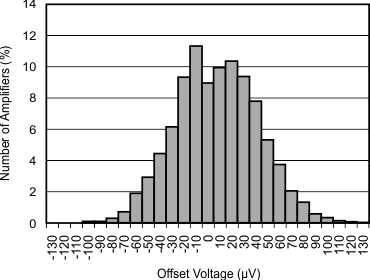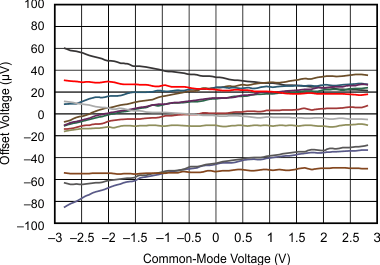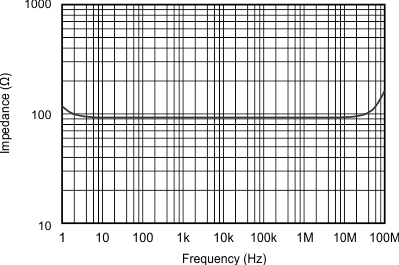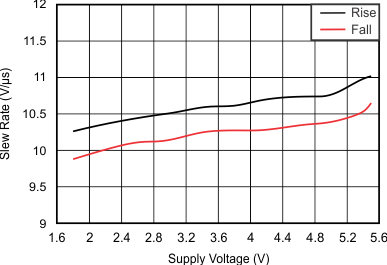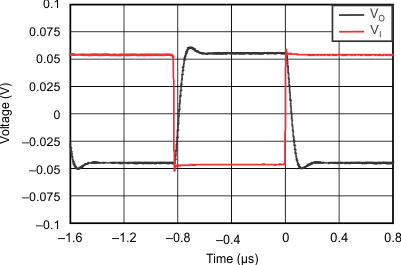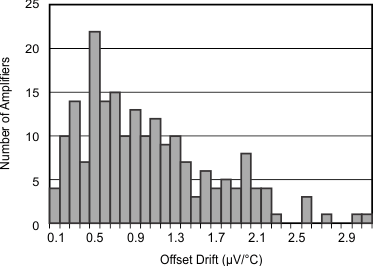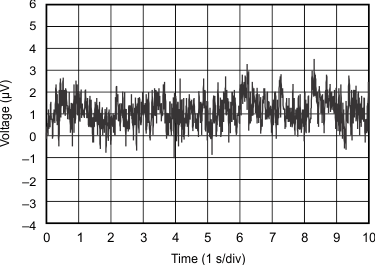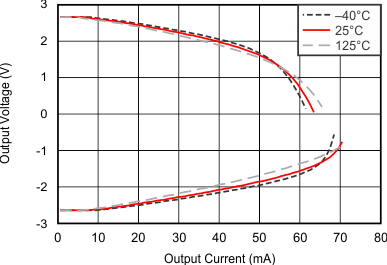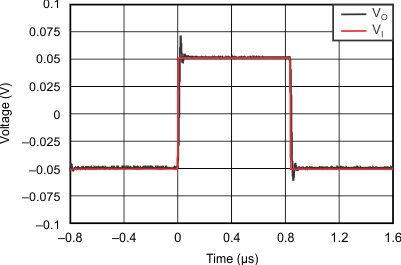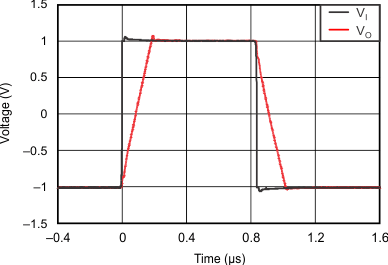JAJSGR4B September 2014 – December 2018 OPA2320-Q1 , OPA320-Q1
PRODUCTION DATA.
- 1 特長
- 2 アプリケーション
- 3 概要
- 4 改訂履歴
- 5 Pin Configuration and Functions
- 6 Specifications
- 7 Detailed Description
- 8 Application and Implementation
- 9 Power Supply Recommendations
- 10Layout
- 11デバイスおよびドキュメントのサポート
- 12メカニカル、パッケージ、および注文情報
6.6 Typical Characteristics
at TA = 25°C, V(CM) = VO = mid-supply, and R(L) = 10 kΩ (unless otherwise noted)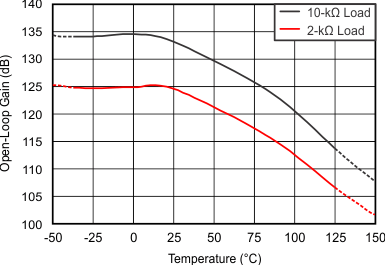
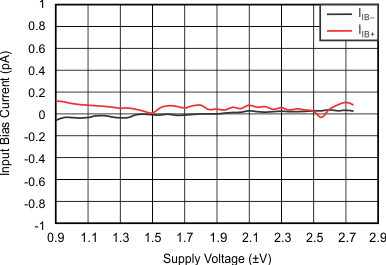
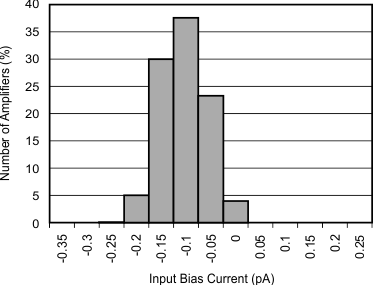
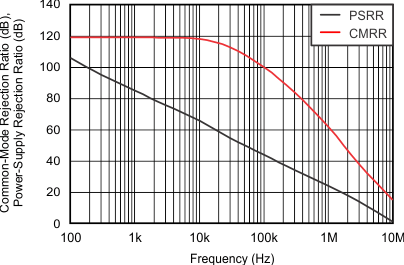
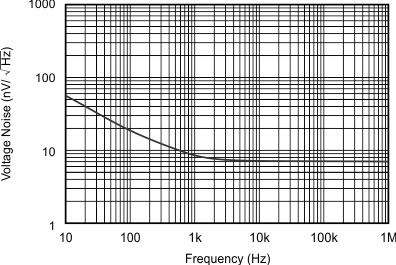
| VS = 1.8 to 5.5 V |
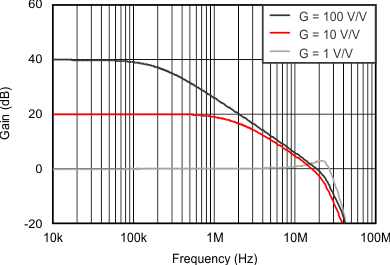
| VS = 1.8 V, C(L) = 50 pF, R(L) = 10 kΩ |
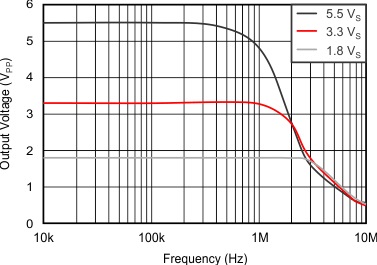
| C(L) = 50 pF, R(L) = 10 kΩ |
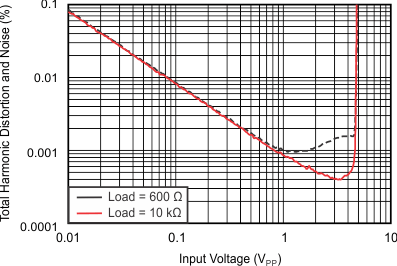
| VS = ±2.5 V, f = 10 kHz, G = 1 V/V | ||
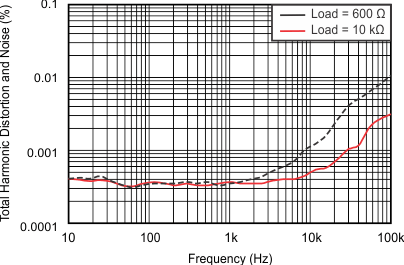
| VS = ±2.5 V, f = 10 kHz, G = 1 V/V, VI = 4 VPP | ||
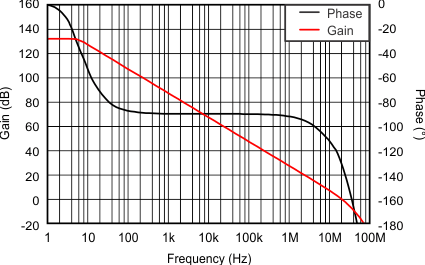
| VS = ±2.5 V, C(L) = 50 pF |
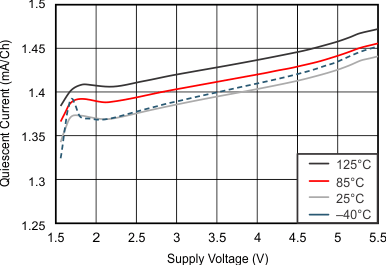
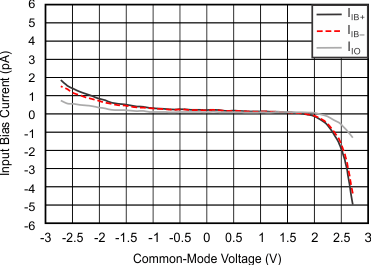
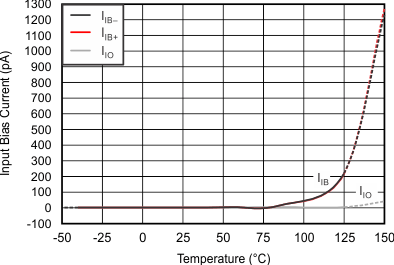
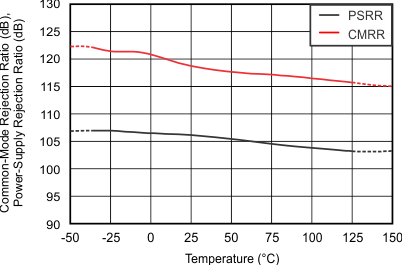
| VS = 1.8 to 5.5 V |
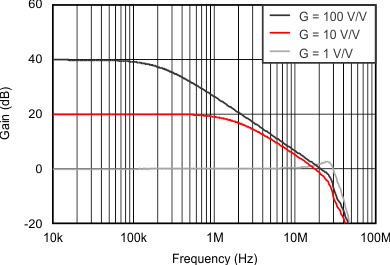
| VS = 5.5 V, C(L) = 50 pF, R(L) = 10 kΩ |
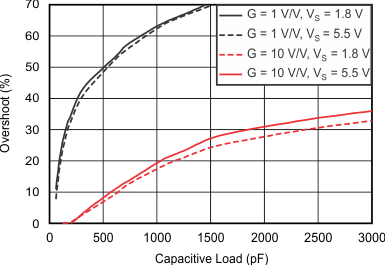
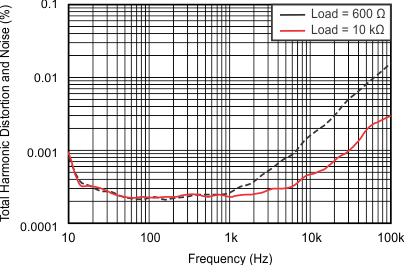
| VS = ±2.5 V, f = 10 kHz, G = 1 V/V, VI = 2 VPP | ||
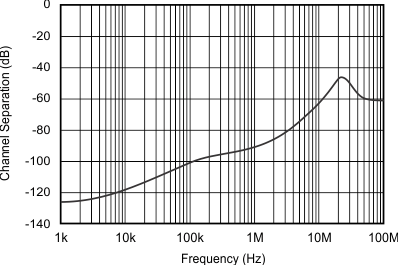
| VS = ±2.75 V | ||
